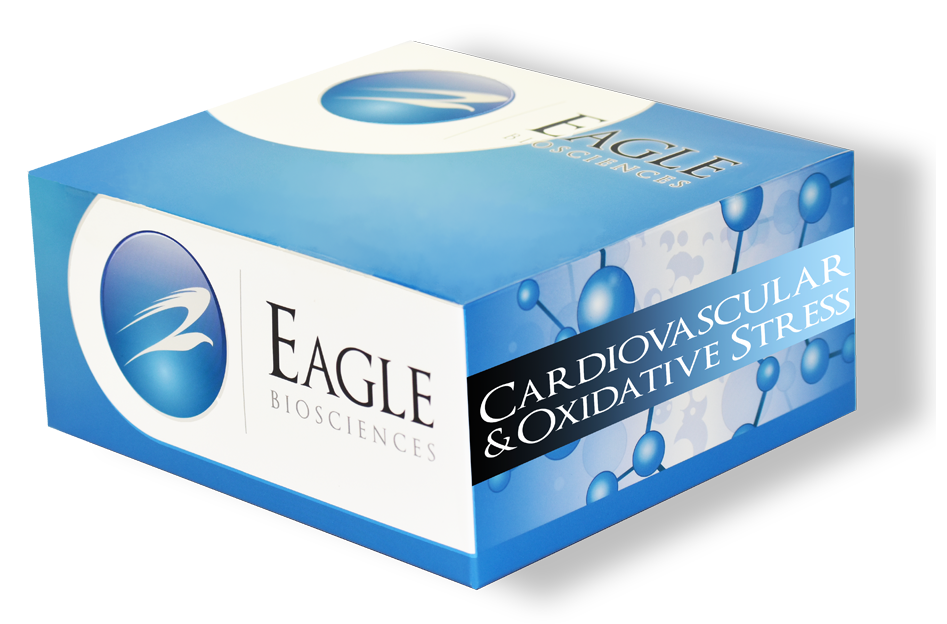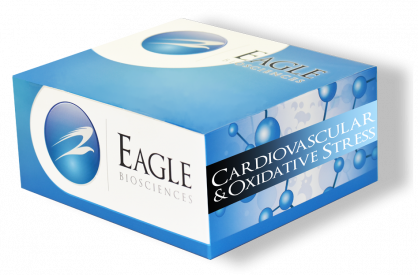Apolipoprotein AI and B Duplex ELISA
The Apolipoprotein AI and B Duplex ELISA is For Research Use Only
Size: 1×96 wells
Sensitivity: 0.1 ng/ml (ApoAI); 1 ng/mL (ApoB)
Dynamic Range: 0.156-10 ng/ml (ApoAI); 1.56-100 ng/mL (ApoB)
Incubation Time: 5 hours
Sample Type: Serum, Plasma, or other biological fluids
Sample Size: 100 µL
Assay Background
Apolipoprotein AI (ApoAI) which is the major protein component of high density lipoprotein (HDL) in plasma. The protein promotes cholesterol efflux from tissues to the liver for excretion, and it is a cofactor for lecithin cholesterolacyltransferase (LCAT) which is responsible for the formation of most plasma cholesteryl esters. [provided by RefSeq, Jul 2008] Apolipoprotein B (ApoB) occurs in plasma as two main isoforms, apoB-48 and apoB-100: the former is synthesized exclusively in the gut and the latter in the liver. Apolipoprotein B is a major protein constituent of chylomicrons (apo B48), LDL (apo B-100) and VLDL (apo B-100). Apo B-100 functions as a recognition signal for the cellular binding and internalization of LDL particles by the apoB/E receptor. [provided by RefSeq, Jul 2008 and uniprot] ApoA1 is often used as a biomarker for prediction of cardiovascular diseases. The ratio apoB-100/apoA1 (i.e. LDL & larger particles vs. HDL particles), NMR measured Lipoprotein (LDL/HDL) particle ratios has always had a stronger correlation with myocardial infarction event rates than older methods of measuring lipid transport in the water outside cells. [provided by wikipedia] A recent study indicated that determining the ratio of ApoB to ApoAI is the best predictor of those at risk of heart attack.
Related Products
Apolipoprotein CI ELISA Assay
Apolipoprotein B ELISA Assay
Apolipoprotein AII ELISA Assay Kit
Assay Principle
This Human ApoAI and ApoB Duplex ELISA Kit employs the quantitative sandwich enzyme immunoassay technique for the detection and quantitation of both human ApoAI and ApoB (ApoB-100/48) in the same sample of plasma, serum or other biological fluids. Antibodies specific for ApoAI and ApoB has been pre-coated onto a microtiter plate. Standards or samples are pipetted into the wells and any ApoAI and ApoB present are bound by the immobilized antibodies. After washing away any unbound substances, a biotin-conjugated antibody specific for ApoAI and an anti-ApoB antibody are added to each well and incubate. Following a washing to remove unbound substances, streptavidin conjugated to Alkaline Phosphatase (AP) and a Horseradish Peroxidase conjugated secondary antibody reacts to anti-ApoB antibody are added to each microplate well and incubated. After washing away any unbound antibody-enzyme reagent, an AP substrate solution is added to the wells and color develops in proportion to the amount of ApoAI bound in the initial step. The intensity of the color developed from AP substrate is measured at a wavelength of 405nm. After wash away the AP substrate, a HRP substrate solution (TMB) is added to the wells and color develops in proportion to the amount of ApoB bound in the initial step. The color development is stopped by the addition of acid and the intensity of the color is measured at a wavelength of 450nm. The concentration of ApoAI and ApoB in the sample is then determined by comparing the O.D of samples to the standard curve.
Assay Procedure
1. Remove excess microtiter strips from the plate frame, return them to the foil pouch containing the desiccant pack, and reseal it. Standards and samples should be assayed in duplicates.
2. Add 100 μl of the Standards and diluted samples into the appropriate wells. Incubate for at least 2 hours at 37°C or incubate overnight at 4°C.
3. Aspirate each well and wash, repeating the process 2 times for a total 3 washes. Wash by filling each well with 1× Wash Buffer (250 μl) using a squirt bottle, manifold dispenser, or autowasher. Complete removal of liquid at each is essential to good performance. After the last wash, remove any remaining Wash Buffer by aspirating, decanting or blotting
4. Add 100 µl of the Primary Antibodies Mixture working solution to each well, incubate for 1 hour at RT on a microplate shaker.
5. Aspirate each well and wash as step 3.
6. Add 100 µl of the Enzyme Conjugate Mixture working solution to all wells and incubate for 1 hour at RT on a microplate shaker.
7. Warm AP substrate solution to RT before next wash step. Aspirate each well and wash as step 3. Proceed immediately to the next step.
8. Add 100 μl of AP substrate solution into each well. Incubate for 5-20 mins at RT on a microplate shaker. Avoid exposure to light.
9. Read the OD with a microplate reader at 405nm as the primary wave length.
Package Inserts
Please note: All documents above are for reference use only and should not be used in place of the documents included with this physical product. If digital copies are needed, please contact us.


